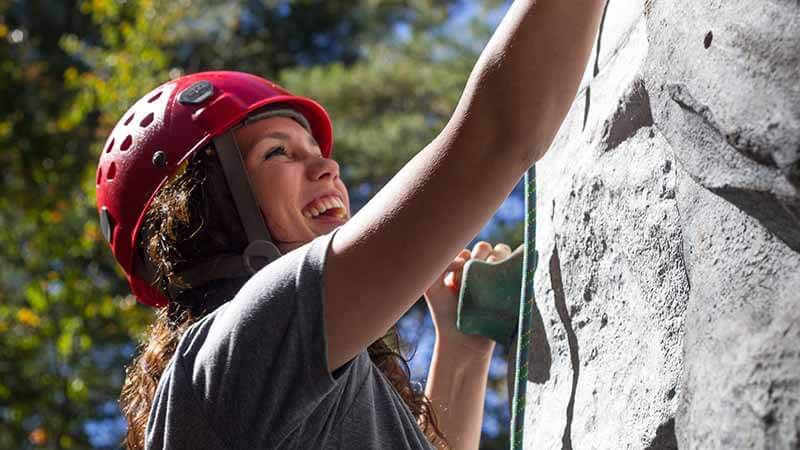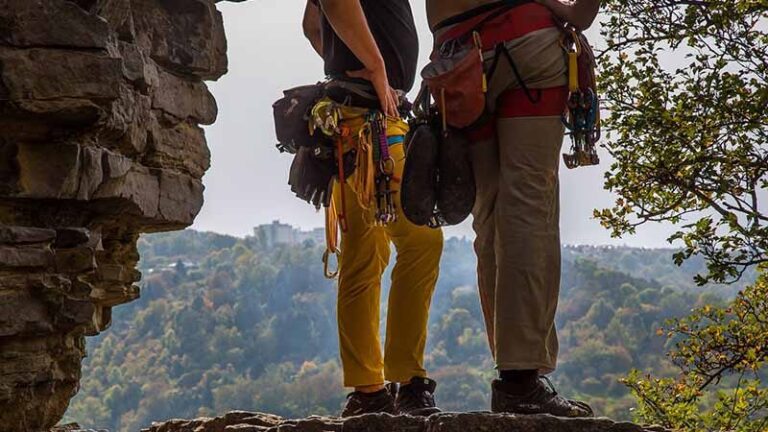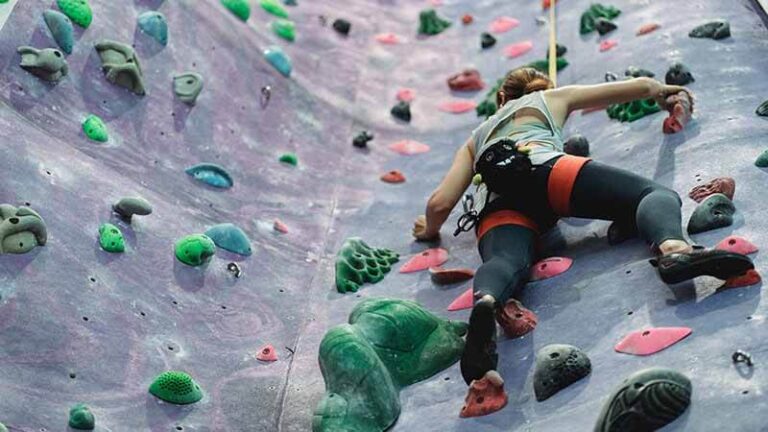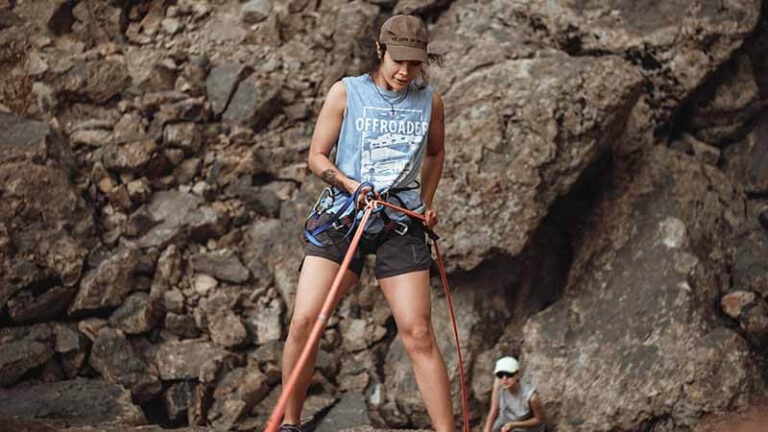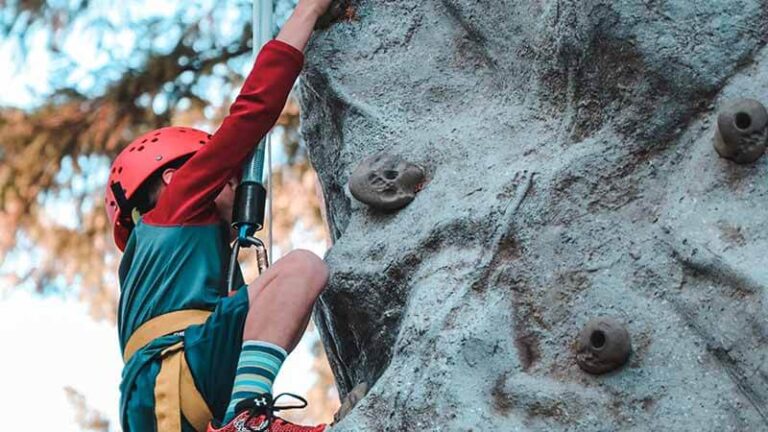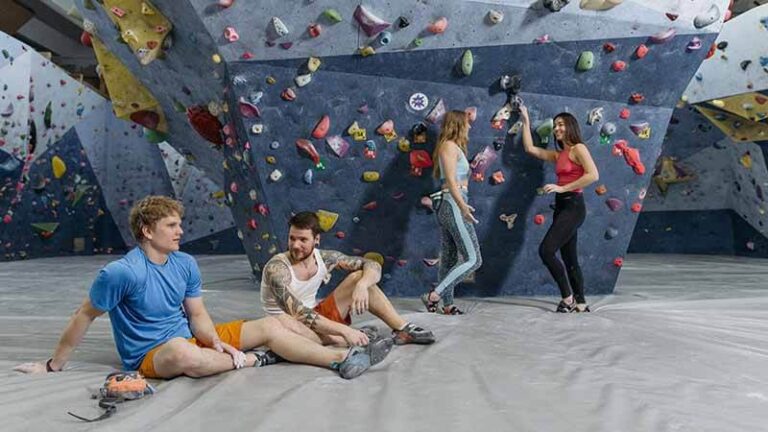Why is Rock Climbing Dangerous?
Climbing steep rock walls or boulders requires physical strength, balance, and problem-solving abilities. Climbers employ a range of tactics to climb routes of various difficulties, such as hand and foot hold, ropes, and harnesses. It is a sport that involves physical endurance, mental attention, and technical skill. Rock climbing can be done in a variety of environments, from indoor climbing walls to high mountain peaks.
History of rock climbing
Climbing has been practiced for thousands of years, dating back to the Greeks and Romans, who employed climbing techniques to scale cliffs and walls for defensive purposes. With the development of more complex climbing gear and techniques in the late nineteenth century, the sport as we know it today began to take shape. British climber Walter Parry Haskett Smith completed the first recorded ascent of a steep rock face in 1886 when he ascended the Napes Needle in England’s Lake District.
Climbing became a popular recreational sport in the early twentieth century, and climbers began to explore new regions and push the boundaries of what was feasible. Rock climbing is becoming a global phenomenon, with climbers from all over the world pushing the sport’s limits in increasingly difficult and inaccessible areas.
Rock climbing can be dangerous despite being a thrilling and adventurous sport, and understanding the risks is critical to staying safe. While many climbers enjoy physical and mental challenges, there are inherent dangers such as falls, equipment failure, and environmental hazards.
Climbers can lower the possibility of damage or mishap by taking adequate safety precautions such as proper training, equipment, and risk management. Climbers must be aware of these risks and take the appropriate procedures to keep safe while enjoying this enjoyable sport.
Why is Rock Climbing Dangerous?
Climbing rocks is a popular pastime that has been practiced for millennia. It is an exciting and daring hobby that needs physical strength, mental attention, and technical abilities. However, along with the thrills and excitement come risks and dangers that must not be overlooked. Rock climbing is a dangerous sport that can cause significant injuries or even death if necessary precautions are not taken.
We will look at why rock climbing is dangerous, the risks involved, and the precautions climbers should take to reduce the risks. Whether you are a seasoned climber or a beginner, understanding the dangers connected with rock climbing is critical to ensuring your own and others’ safety.
Physical Risks
Climbing rocks is a physically challenging sport that calls for strength, balance, and agility. Along with these challenges, climbers must be aware of physical risks to ensure their safety. Here are some of the most serious physical risks associated with rock climbing:
Falling
The most prevalent and potentially catastrophic risk in rock climbing is falling. Climbers frequently reach enormous heights, and any misstep or equipment malfunction might result in a fall. The following are some examples of falls:
- Leader falls: This sort of fall occurs when the climber in charge of the pitch or climb falls. The rope is fixed above the climber, and the fall is potentially fatal.
- Second fall: This type of fall occurs when the second climber falls while attempting to follow the pitch or ascent. Because the rope is anchored beneath the climber, the fall may be shorter than a leader fall.
Factors that affect falling include:
- The distance fell: The larger the distance fell, the greater the risk of harm.
- The fall’s angle: A fall at an angle can result in a more intense impact and a higher risk of damage.
- The landing surface: Landing on a hard surface, such as a rock, might result in more serious injuries than landing on a softer surface, such as a snowbank.
- The climber’s stance: A climber who falls in an awkward position may get more severe injuries.
Equipment Failure
Rock climbing requires the use of protective equipment to keep climbers from falling. When this equipment fails, serious harm or even death can result. Some of the most prevalent pieces of equipment that can fail are as follows:
- Rope: Climbing ropes are necessary for safety, but they might deteriorate over time, resulting in failure. Ropes can also break owing to sharp edges or high temperatures.
- Harness: A climbing harness is intended to keep a climber tethered to the rope, but it might fail if improperly adjusted or torn.
- Anchors are used to secure the rope to the rock. If the anchor fails, the climber will fall, perhaps causing significant damage or death.
Injuries
Rock climbing is a physically demanding sport that can cause a variety of injuries. The following are some of the most prevalent rock-climbing injuries:
- Sprains and fractures: Because of falls or repetitive stress on the hands and feet, climbers might sustain sprains and fractures.
- Brain injuries: A fall from a considerable height can cause a severe brain injury that can be fatal.
- Hypothermia: Climbers may be exposed to extreme weather conditions, which can result in hypothermia, a potentially fatal condition in which the body’s temperature drops dangerously low.
Overall, rock climbing is an exciting and gratifying sport, but climbers must be mindful of the physical risks involved in order to be safe. Climbers can take the required precautions to avoid hazards and enjoy a safe and successful climb by learning the types of falls, factors that affect falling, equipment failure, and common injuries.
Environmental Risks
Climbing rocks is an outdoor activity that exposes climbers to a variety of environmental hazards. These dangers include inclement weather, wildlife encounters, and altitude-related ailments. Here are some of the most serious environmental risks associated with rock climbing:
Weather
One of the major environmental concerns that rock climbers confront is weather. Adverse weather conditions can make climbing perilous, even fatal. Climbers should be cautious of the following weather-related hazards:
- Rain: Climbing on wet rock can be dangerous since the surface becomes slick, increasing the chance of falling.
- Lightning: Climbers are especially vulnerable to lightning strikes if they are on a highly exposed surface.
- High winds: High winds can impact the climber’s stability, making it difficult to maintain balance and increasing the risk of falling.
Wildlife
Wildlife encounters can endanger rock climbers. The following are some of the most common wildlife-related risks:
- Snakes: Some snakes are toxic and can bite climbers, resulting in severe injuries.
- Insects: Climbers may come into contact with insects like bees and wasps, which can sting and create an allergic reaction.
- Creatures: Climbers in some regions may come into contact with bears, cougars, and other huge creatures that might pose a threat.
Altitude
Climbers who reach high altitudes may suffer from altitude-related ailments. Here are two risks associated with altitude:
- Acute mountain sickness: This is a typical altitude-related ailment that happens when climbers go to high elevations too quickly, resulting in headaches, nausea, and dizziness.
- Hypoxia: Hypoxia happens when the body does not obtain enough oxygen as a result of being at a high altitude, resulting in symptoms such as shortness of breath and confusion.
Climbers must be aware of the environmental hazards that come with the activity. Climbers can stay safe and avoid injury if they understand weather-related dangers, wildlife-related risks, and altitude-related risks. Before beginning a climb, it is also critical to verify the weather forecast and investigate the wildlife and altitude conditions of the climbing location.
Human Factors
Rock climbing, in addition to physical and environmental concerns, incorporates a number of human elements that might enhance the likelihood of accidents and injuries. The following are some of the most important human variables that climbers should be aware of:
Overconfidence
Overconfidence is a prevalent issue among climbers, particularly those with previous experience or success. Climbers who are overconfident may misjudge the risks of a climb, causing them to take needless risks and make poor decisions.
Lack of experience
Inexperienced climbers may lack the essential skills and expertise to appropriately assess hazards or make educated judgments, rendering them more vulnerable to accidents.
Poor judgment
Another human component that might raise the likelihood of an accident is poor judgment. Climbers who make bad decisions, such as disregarding safety standards or taking needless risks, are more likely to be involved in an accident or have an injury.
Fatigue
Climbing demands a significant amount of physical and mental energy, and exhaustion can affect a climber’s judgment and decision-making abilities, increasing the danger of an accident.
Distractions
Talking to other climbers or snapping photos can divert a climber’s focus away from the work at hand, resulting in mishaps and injuries.
Climbers should be conscious of their limitations, have a healthy respect for the activity, and follow safety practices to reduce the risks connected with human variables. Climbers should also get enough rest and nutrition to avoid weariness and distractions while staying focused on the climb.
It is critical to remember that rock climbing is a risky sport that needs preparation, skill, and prudence, and failing to do so can result in serious injuries or even death.
Safety Measures
Rock Climbing is a dangerous sport, but there are various precautions climbers can take to reduce dangers and ensure a safe climb. Climbers should be aware of the following important safety precautions:
Training
Climbers must train to develop the physical and technical skills required for safe climbing. Here are two critical areas to concentrate on during training:
- Climbing necessitates a high level of physical fitness, including strength, endurance, and flexibility. Climbers should exercise and train on a regular basis to increase their fitness and avoid injuries.
- Technical abilities: Climbers must have the technical abilities required to navigate the terrain safely. This includes belaying, knot-tying, and correctly using climbing equipment. To achieve these skills, climbers should get formal training from skilled instructors.
Equipment
For safe climbing, proper climbing equipment is required. Climbers should have the following essential pieces of equipment:
- Helmet: A helmet protects the head from falling rocks or other things.
- Climbing shoes: Climbing shoes help to prevent falls by providing grip and support on the rock.
- Rope and anchor: Ropes and anchors are used by climbers to tie themselves to the rock and avoid falls. It is critical to use high-quality, tested ropes and anchors and to understand how to utilize them properly.
Risk management
To reduce the dangers involved with climbing, risk management entails preparation, communication, and emergency measures. Here are some of the most important risk management strategies:
- Planning: Climbers should plan their route and ascent, taking weather, terrain, and climbing difficulty into account.
- Communication: Climbing partners should communicate on a regular basis to ensure that everyone is on the same page about the route, potential risks, and any modifications to the plan.
- Climbers should have an emergency plan in place in case of an emergency, such as a fall or injury. This strategy should contain processes for requesting assistance and providing first aid.
If climbers take the appropriate precautions, rock climbing may be a safe and pleasant sport. Climbers can reduce the hazards involved with climbing while still enjoying the thrill of the climb by focusing on training, equipment, and risk management.
Conclusion
Despite the difficulties of rock climbing, it may be a safe and gratifying experience if undertaken with the correct training, equipment, and risk management. Climbing involves a high level of physical fitness as well as technical skills, which should be developed through rigorous training from experienced instructors.
Proper equipment, including a helmet, climbing shoes, and high-quality ropes and anchors, is also required. Climbers should also use risk management tactics like preparation, communication, and emergency procedures to reduce the risks involved with climbing.
Climbers can reduce hazards and enjoy the pleasure and challenge of rock climbing by following these safety precautions carefully. However, it is crucial to remember that even with the right safeguards, climbing is a risky sport, and accidents can occur. Climbers must always stay alert and emphasize safety above all else.

